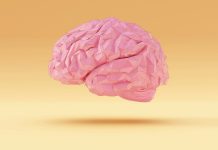
What is Alzheimer’s Disease?
Alzheimer’s disease (AD) is a disease that affects the brain. It’s a type of dementia, and it’s the most common kind. It affects millions of people all over the world.
In this disease, brain cells slowly die off over time, leading to memory loss, confusion, and difficulty with thinking and behavior.
There are two types of Alzheimer’s: early-onset and late-onset. Early-onset is rare and typically involves changes in certain genes.
It tends to be more severe and can lead to unusual symptoms. Late-onset Alzheimer’s disease (LOAD) is more common and affects a larger group of people.
The Shanghai APP Mutation and LOAD
A group of researchers from Shanghai and other parts of the world have made a big discovery. They found a new mutation in a gene called APP.
This mutation, known as the “Shanghai APP” mutation, is linked to LOAD.
This finding, which was published in the scientific journal Genes & Diseases, came about when the researchers studied a Chinese patient.
This patient started to have memory problems in his mid-70s. Using brain imaging techniques, they confirmed that his brain had lots of amyloid β, a kind of protein that’s a hallmark of Alzheimer’s disease.
The Impact of the Mutation
The scientists used computer simulations and lab experiments to study this new mutation. They found that it leads to more APP being processed and more amyloid β being produced.
This protein is toxic and is linked to Alzheimer’s disease.
In addition, they found that the mutated protein forms more clumps than the normal protein. These clumps, made up of several protein strands, are another hallmark of Alzheimer’s disease.
To see the effects of the mutation in a living organism, the researchers introduced the mutant gene into the brains of young mice.
They found that the mice with the mutant gene showed signs of impaired learning and had more signs of disease in their brains. This demonstrates that this mutation is indeed linked to Alzheimer’s disease.
What Does This Mean for Alzheimer’s Research?
This new finding is a big deal. As far as the researchers know, this is the only mutation within the amyloid processing sequence that causes LOAD.
This discovery could help us better understand how LOAD develops. It could also lead to better treatments for people with this form of Alzheimer’s.
The discovery of the Shanghai APP mutation opens up new possibilities for research.
By studying this mutation more, we can learn more about how it affects the disease. This could lead to new treatments that slow down or even stop the disease.
In the end, understanding more about this mutation could lead to better ways to prevent or treat Alzheimer’s disease.
This could greatly improve the lives of millions of people with Alzheimer’s and their families.
If you care about brain health, please read studies about vitamin D deficiency linked to Alzheimer’s and vascular dementia, and nutrient in meat, fish and beans may be key to preventing Alzheimer’s.
For more information about brain health, please see recent studies about antioxidants that could help reduce dementia risk, and coconut oil could help improve cognitive function in Alzheimer’s.
The study was published in Genes & Diseases.
Copyright © 2023 Knowridge Science Report. All rights reserved.



